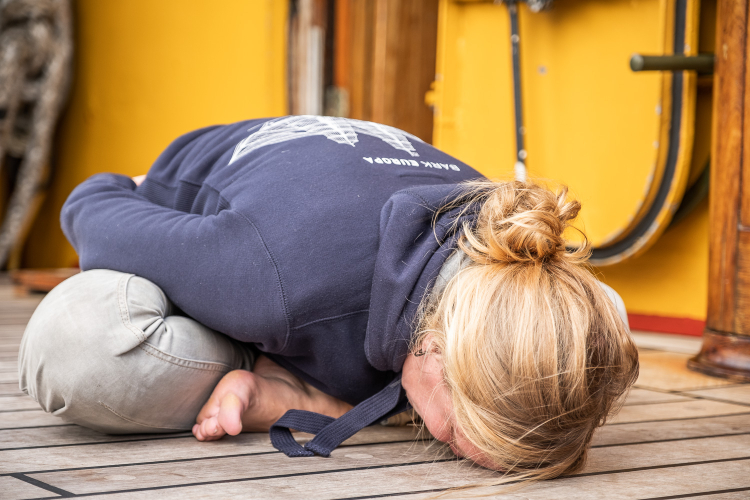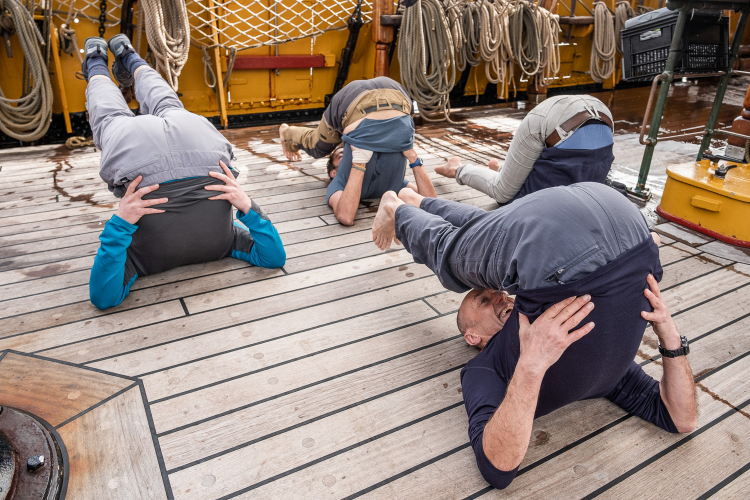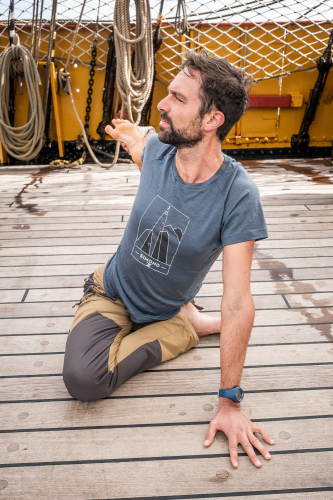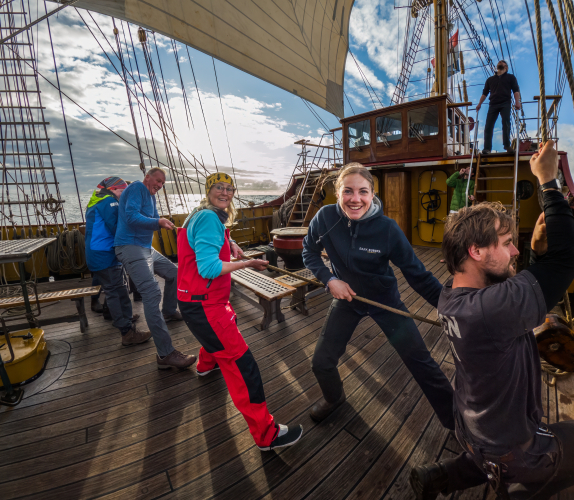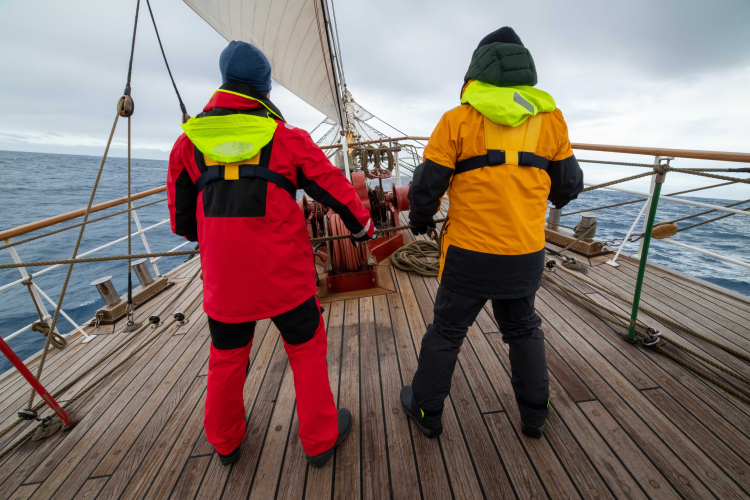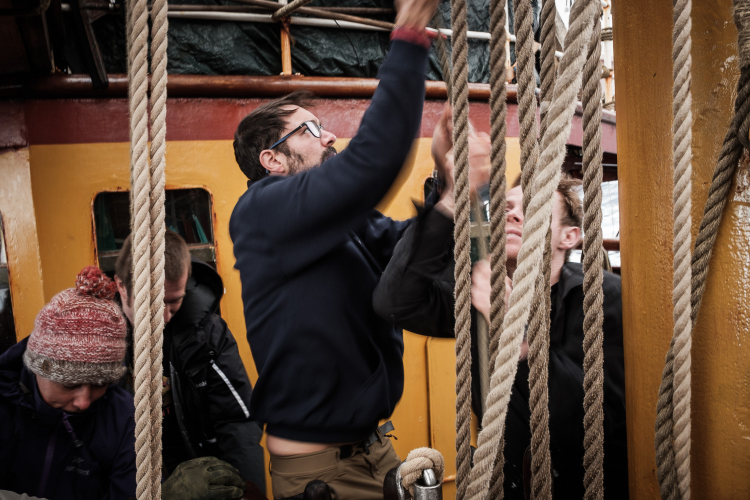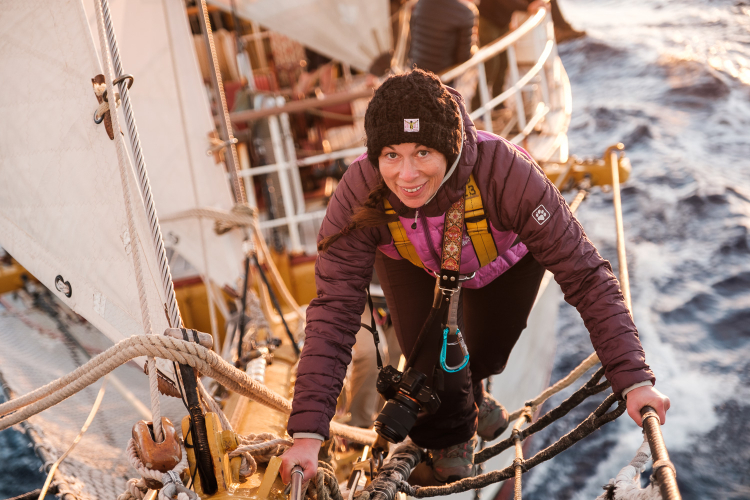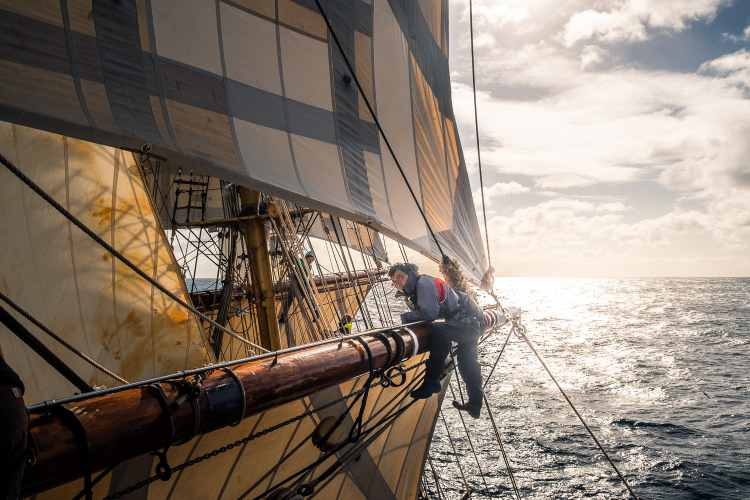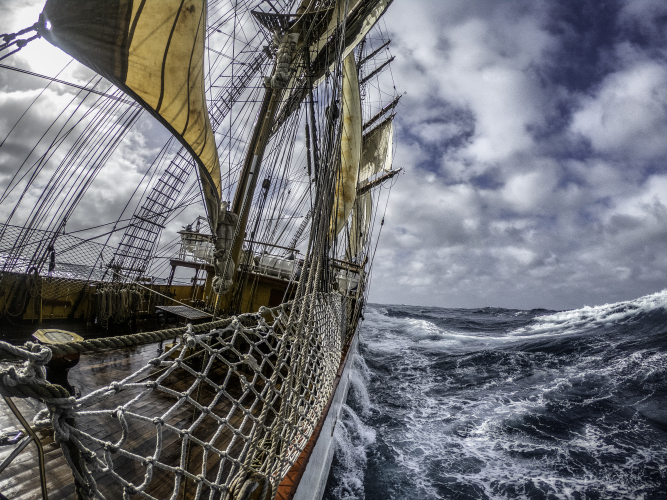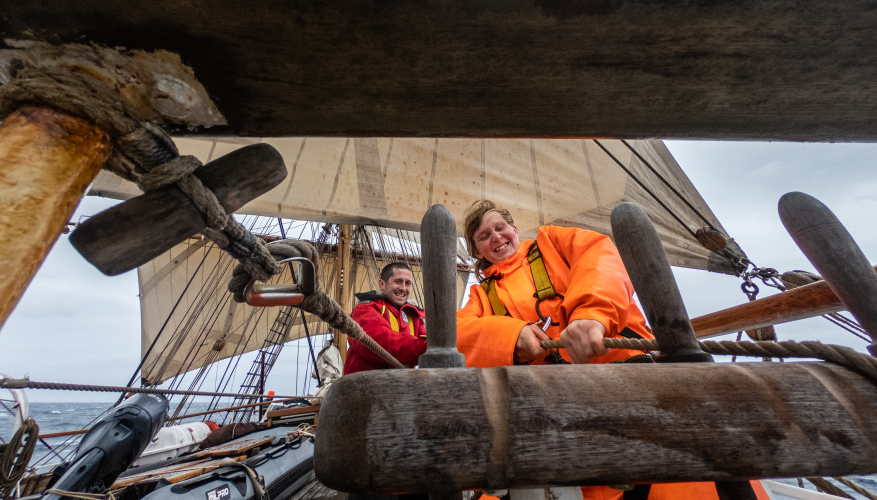Training for life at sea
Sailor requirements
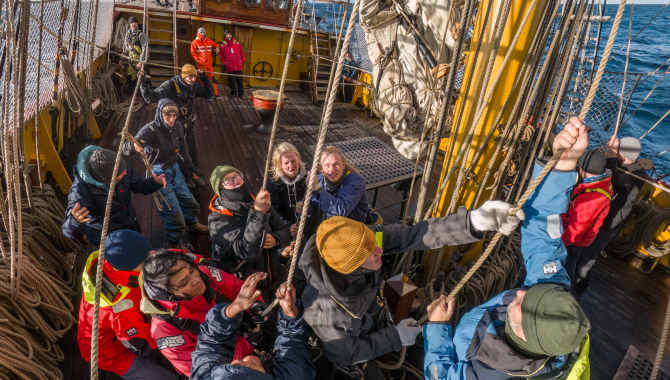
Sailing on Bark EUROPA is an incredible adventure, but it also demands you to be physically fit for something you have not experienced before. Life on a moving ship requires balance, strength, endurance and flexibility to navigate and contribute safely to the voyage crew. Whether you're hauling ropes, climbing rigging or just staying steady on deck, being prepared for your voyage will make your time on board even more worthwhile!
Training exercises
This guide will help you build the strength, balance and stability needed for your voyage. These exercises can help to step on board with confidence, ready to embrace the challenges and rewards of life on the ocean.
1 Balance and stability training
Being able to stay steady on a moving deck is crucial and not something you experience in your daily life ashore. Whether you're adjusting to the ship's motion, moving across wet surfaces or climbing the rigging, good balance helps prevent injuries and ensures you can perform your jobs safely.
Here are some exercises to improve your balance and stability:
- Single-leg stands – Stand on one leg for 30–60 seconds, then switch. To make it more challenging, try closing your eyes or standing on an unstable surface (like a cushion or balance pad).
- Heel-to-toe walk – Walk in a straight line, placing one foot directly in front of the other, as if walking on a tightrope. Keep your arms relaxed at your sides and focus on smooth, controlled movements. This improves coordination for moving around on deck.
- Bosu ball or balance board exercises – Using a Bosu ball or a wobble board mimics the unstable surface of a ship’s deck. Stand, squat, or perform gentle movements on the board to engage core and ankle stabilizers. This will help your body adapt to unpredictable shifts in balance at sea.
- Yoga – Yoga will help improve balance, flexibility, and body awareness. Train your ability to adjust to shifting weight, while improving overall stability and strengthening core muscles.
2 Strength training (full body and core focus)
Strength is essential for life on board Bark EUROPA. From pulling ropes and climbing the rigging to maintaining stability on a moving deck, your muscles must be prepared for the physical demands of sailing. On board, we also conduct a short test to check if you have sufficient strength in your arms to safely climb the rigging.
Good exercises for strength training would be:
- Bodyweight squats & lunges
- Squats: Stand with feet shoulder-width apart, lower yourself down as if sitting in a chair, then push back up. This is a key exercise for stability on a moving ship.
- Lunges: Step forward with one leg, lowering your back knee toward the ground, then push back up and switch legs. This enhances single-leg strength, balance, and mobility.
- Step-ups (good for stimulating stairs)
- Use a sturdy bench, box, or step (ideally around knee height). Step up with one leg, bring the other up, then step down.
- Try this movement as well by making a large step of at least 50 cm high to simulate the step over a closed water hatch.
- Planks & side planks (good for core stability to maintain balance)
- Standard plank: Hold a push-up position with your forearms on the ground, keeping your body in a straight line.
- Side plank: Lie on your side, propped up on one elbow, lifting your hips off the ground.
- Pull-ups or assisted pull-ups (climbing the rigging and handling ropes require strong upper-body muscles, particularly in the back, shoulders, and arms)
- If you can’t do a full pull-up yet, use a resistance band for assistance or do negative pull-ups (jump up and slowly lower yourself down).
- If you can't do a pull up yet, try to hang on a bar for at least 30 seconds, which is the minimum requirement to pass the climbing test.
- Farmer’s carry (walking while carrying heavy weights helps simulate carrying gear or ropes on board)
- Hold a weight in each hand (dumbbells, kettlebells, or any heavy object), keep your posture upright, and walk a set distance.
3 Endurance
Sailing on Bark EUROPA is physically demanding, often in unpredictable weather and sea conditions. Endurance fitness is crucial for maintaining your energy throughout a long ocean voyage. Here's how you can prepare your endurance for life on board:
- Hiking on uneven terrain (moving around on a rolling deck is a challenge, this way you can train walking on a surface that shifts beneath you)
- Walk or hike for at least 30–60 minutes at a moderate pace, increasing difficulty by choosing a more challenging terrain.
- Jogging or stair climbing (builds endurance for long days on board)
- Jog at a steady pace for 20–40 minutes, focusing on endurance rather than speed.
- Stair climbing strengthens leg muscles used in climbing ship ladders and stairs. Try running up and down a flight of stairs for 5–10 minutes.
- Rowing or swimming (strengthens muscles used in sailing, mimicking the pulling motion required for handling ropes)
- Use a rowing machine or row on water for 10–20 minutes at a steady pace.
- Swim laps in a pool for longer periods without stopping. Cold water swimming can also help acclimate you to lower temperatures at sea.
- Jump rope (high intensity workout that improves footwork and coordination)
- Start with short intervals (30–60 seconds), gradually increasing duration.
- Focus on light, quick jumps to improve ankle stability and coordination.
4 Flexibility and mobility
When sailing on EUROPA, being flexible will help you to navigate tight spaces, climb the rigging, rope ladders or climb in your bunk. Good flexibility will reduce the risk of injury, improves coordination and help you to adapt to life at sea:
- Dynamic stretches
- Leg swings: Hold onto a railing or wall for support and swing one leg forward and backward, then side to side
- Arm circles: Extend your arms and make small, controlled circles, gradually increasing the size.
- Spinal twists: Stand with your feet shoulder-width apart, place your hands on your hips or extend them outward, and gently rotate your torso from side to side. This improves rotational mobility, which is helpful for shifting your weight on a moving deck.
- Hamstring stretches
- Hamstring stretch: Sit or stand with one leg extended straight in front of you, toes pointed up, and slowly reach toward your toes. This stretch will enhance movements that involve big steps, over hatches or thresholds.
- Wrist and forearm stretches
- Wrist flexor stretch: Extend one arm in front of you, palm facing up, and gently pull your fingers back with the opposite hand.
- Wrist extensor stretch: Extend one arm with the palm facing down, then use the other hand to gently press the fingers downward.
5 Mental preparedness
Mental resilience for a long time at sea, without seeing land is just as important as physical fitness. Training your body and mind to handle challenging conditions will help you stay confident and positive.
- Train in night conditions
- Sailing continues after dark, being comfortable to stand on watch during night time, with reduced visibility is important. You can practice your exercises in dark conditions, or go for a walk at night in reduced visibility.
- Be prepared for rough weather circumstances
- Moving on a deck in rough sea conditions will be a challenge. Simulate these conditions by working out with a wobble board or uneven terrains.
- Training in cold environments
- When booking an Antarctica expedition it can be helpful to train your body in a cold environment to build tolerance to lower temperatures.
- Mindfullness and breathing exercises
- Creating a strong mindset and starting well rested on your expedition is equally important to physical exercises. Mindfullness can help you control your breathing, regulate stress and maintain your focus.
